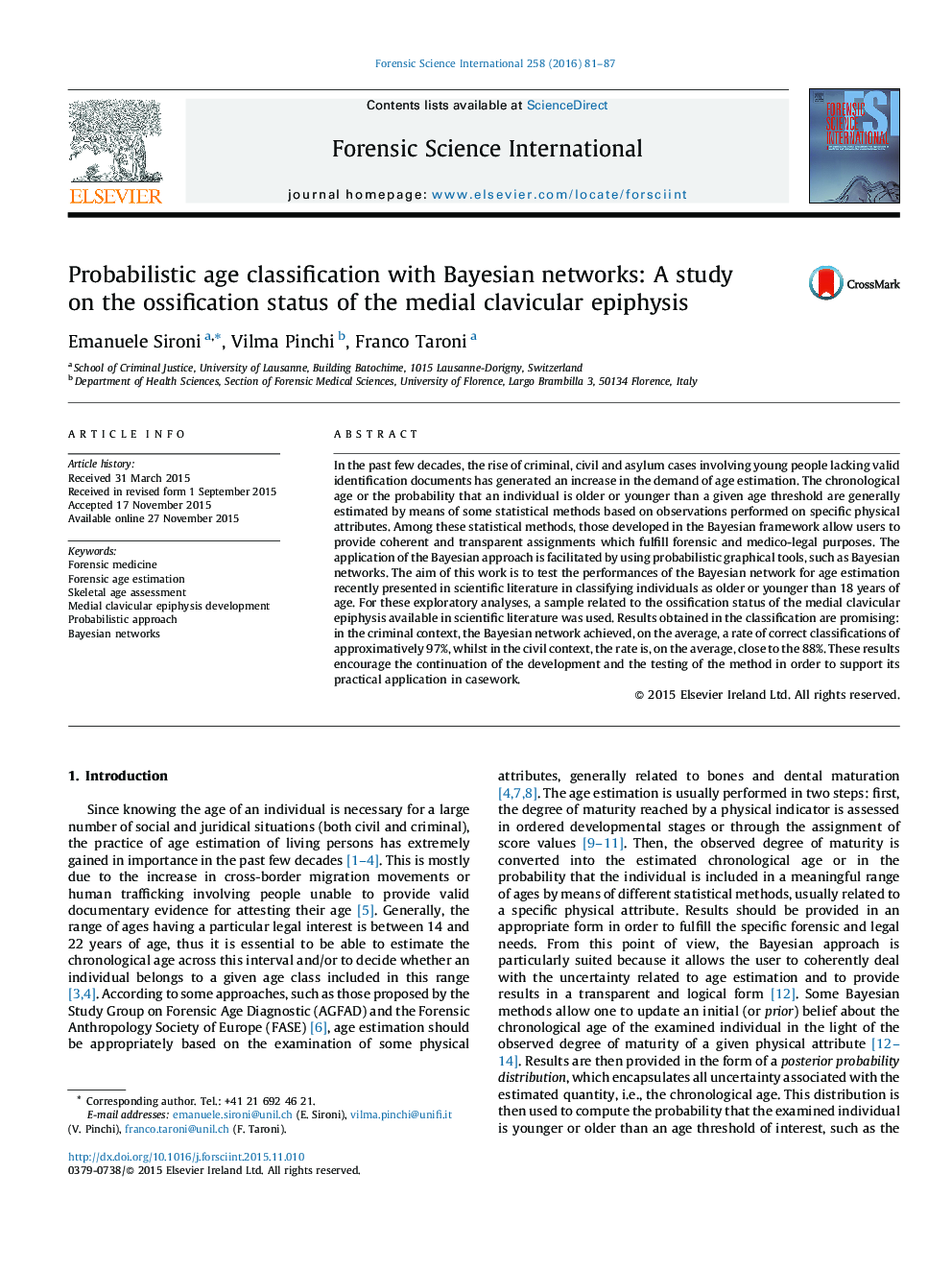| کد مقاله | کد نشریه | سال انتشار | مقاله انگلیسی | نسخه تمام متن |
|---|---|---|---|---|
| 95235 | 160420 | 2016 | 7 صفحه PDF | دانلود رایگان |
• Bayesian methods are suited to deal with uncertainty related to forensic age estimation.
• They allow users to provide results in form which fulfill the forensic and legal needs.
• Bayesian networks are powerful in forensic age estimation context.
• This kind of probabilistic tools ease the application of the Bayesian approach.
• Exploratory analyses on the collar bones development are promising.
In the past few decades, the rise of criminal, civil and asylum cases involving young people lacking valid identification documents has generated an increase in the demand of age estimation. The chronological age or the probability that an individual is older or younger than a given age threshold are generally estimated by means of some statistical methods based on observations performed on specific physical attributes. Among these statistical methods, those developed in the Bayesian framework allow users to provide coherent and transparent assignments which fulfill forensic and medico-legal purposes. The application of the Bayesian approach is facilitated by using probabilistic graphical tools, such as Bayesian networks. The aim of this work is to test the performances of the Bayesian network for age estimation recently presented in scientific literature in classifying individuals as older or younger than 18 years of age. For these exploratory analyses, a sample related to the ossification status of the medial clavicular epiphysis available in scientific literature was used. Results obtained in the classification are promising: in the criminal context, the Bayesian network achieved, on the average, a rate of correct classifications of approximatively 97%, whilst in the civil context, the rate is, on the average, close to the 88%. These results encourage the continuation of the development and the testing of the method in order to support its practical application in casework.
Journal: Forensic Science International - Volume 258, January 2016, Pages 81–87
